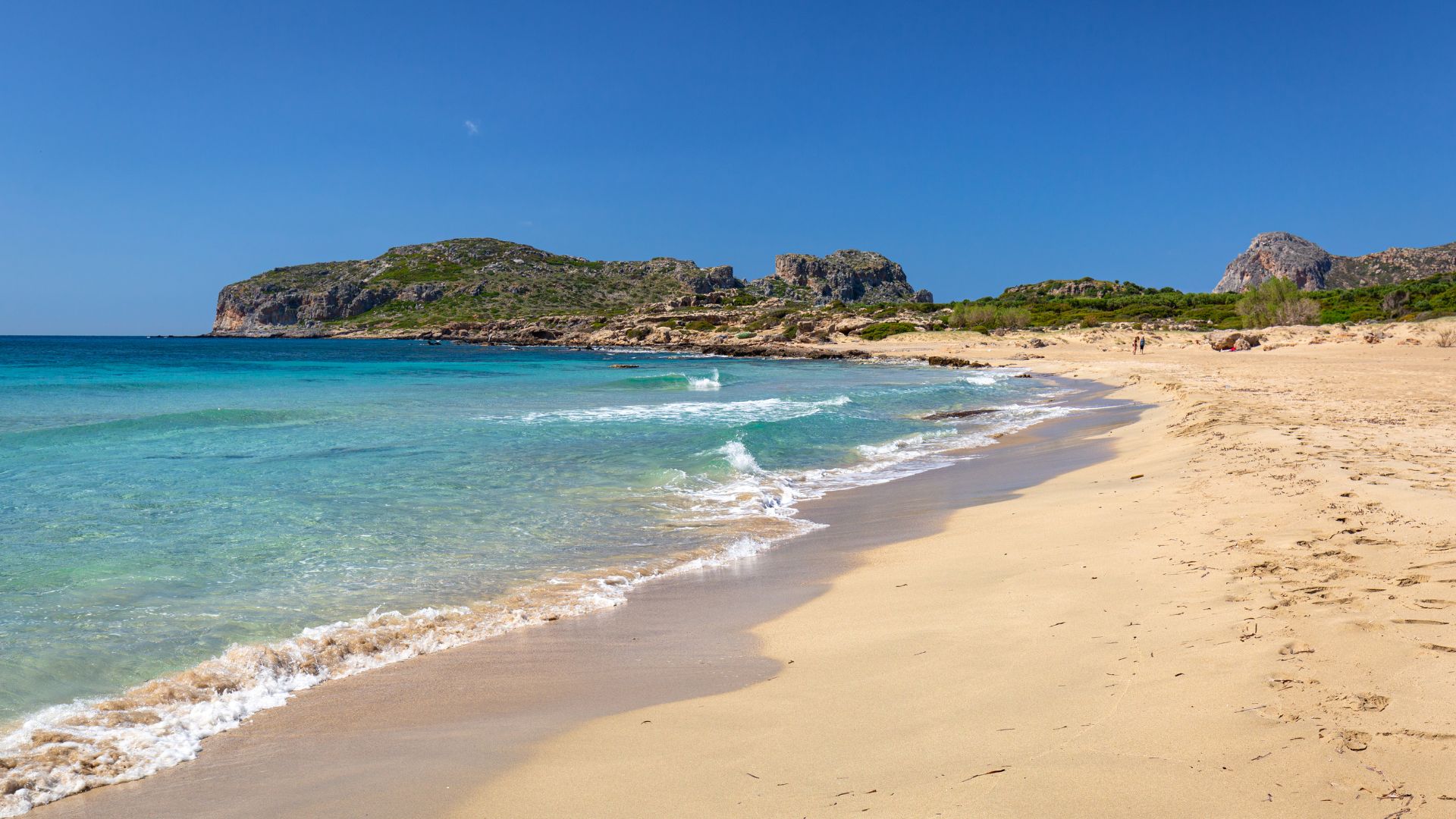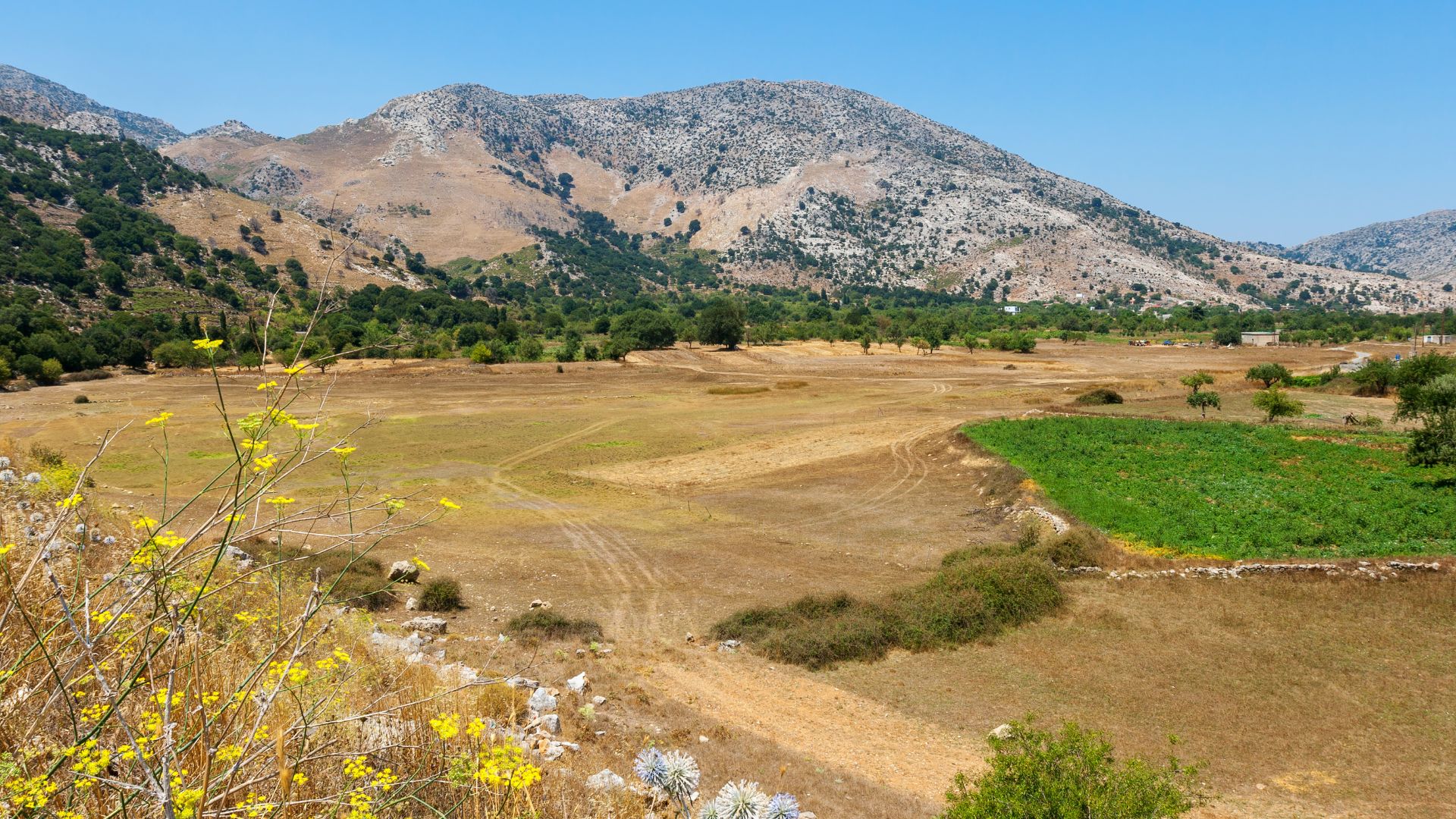Seven days on the island of Crete
The largest of the Greek islands, Crete is also the most southerly island in the Mediterranean located between mainland Greece and the coast of Libya. Home to one of the earliest maritime civilisations - the Minoans, Crete has a rich history stretching back over 4,000 years. The landscape is dotted with the influence of the many cultures that have flourished here including the Venetians and Ottomans.
Most visitors opt to stay in either Chania or Heraklion, the largest of the towns on the northern side of the island, but there are plenty of smaller characteristic villages. In order to truly appreciate the best, the island has to offer, we recommend hiring a car.
The northern part of the island is more developed, well connected with good roads and a regular bus route and most popular with tourists. The southern coast is more rugged and less populated, some parts are difficult to get to, but this is where you will find unspoilt beaches and small villages untouched by tourism.
Day 1: Exploring Chania
The old town of Chania is a perfect place to start and get a taste for the rich history of the island. The old town is well-preserved and offers a unique insight into the island's Venetian and Ottoman past. Narrow streets filled with beautiful architecture, colourful buildings and quaint shops selling traditional handicrafts and souvenirs.
Stroll along the picturesque Venetian Harbour which dates back to the 14th century and is dominated by a curious lighthouse, a mix of Ottoman Venetian and Egyptian styles with a minaret. Don’t miss the mosque on the edge of the harbour.
After a bit of exploring, it's time to enjoy some traditional dishes at a local taverna. Ensure you try the local specialties like dakos, a traditional salad of tomatoes, feta cheese, and bread, and kalitsounia, a savoury pastry filled with cheese or herbs. Many tavernas have outdoor seating areas that overlook the harbour or the old town, a stunning backdrop for your meal.

![]()
Day 2: Discovering the Beaches of the West Coast
Day two is for relaxation and exploring the best beaches on the island. The first, Falassarna Beach, located on the western coast of the island has breath taking views of the sea and the surrounding landscape. You can rent sun beds and umbrellas or just place your towel on the sand and there is a taverna on the beach with waiter service. Falassarna is famous for its crystal-clear waters and is an ideal spot for swimming and snorkelling.
Elafonisi Beach, on the southwestern coast of Crete is known for its unique pink sand, made of crushed shells and coral. The shallow, crystal-clear waters of the sea are perfect for swimming and enjoying water sports. Elafonisi has some of the best sunsets on the island.

Day 3: Hiking the Samaria Gorge
For those who love hiking and being immersed in natural beauty, Samaria Gorge is a must. The 16 km path through the gorge passes through ancient rock formations, lush greenery, and a mountainous backdrop. At the narrowest point you will find the iconic Iron Gates. The hike takes around 5-7 hours depending on your pace, and can be challenging. The hike ends at Agia Roumeli where you can take a refreshing dip in the Libyan Sea. From there, you can take the ferry to Sfakia, where you can enjoy some traditional Cretan cuisine and soak in the stunning views.

Day 4: Exploring the Palace of Knossos
No visit to the island of Crete would be complete without a visit to the Palace of Knossos, the largest archaeological site in Crete and most important bronze age site in the Mediterranean. The palace was the administrative centre of the Minoan civilization, between 3000-1400 BCE. We recommend taking a guided tour of the site with its dizzying number of rooms that gave rise to the legend of the Minotaur and the Labyrinth. The ancient palace is famous for its frescos, of bulls and marine life and the oldest Throne Room, complete with a stone throne.
After exploring the palace, head to the Heraklion Archaeological Museum, which boasts the most significant Minoan artifacts in the world including statues, pottery, and jewellery found at Knossos and other important Minoan sites on the island.

![]()
Day 5: Day trip to Santorini
If you plan to only visit Crete, we recommend a day trip to another of Greece’s most unique and enchanting islands – Santorini. You can take organised cruises or do it yourself, Santorini is just over two hours by ferry from Crete. Originally the Island of Thera, Santorini’s unique landscape is thanks to an ancient volcanic eruption. The tiny island is famous for its iconic white houses and blue domed churches which are perched on the caldera or crater of an active volcano. Santorini offers hiking, swimming in hot springs, breath-taking views, picture-postcard villages and is famous for its volcanic wine.

Day 6: Rethymnon and Preveli Beach
Rethymnon on the northern coast was once the Venetian stronghold of the island. It is the best-preserved medieval town, with a labyrinth of narrow streets, hidden squares and courtyards with a mix of Venetian and Ottoman styles. Don’t miss the 16th century Venetian Fortress, built to protect the town from pirates and other invaders. After exploring the old town, stop for lunch at one of the waterside local tavernas at the Venetian harbour.
For some relaxation after Rethymnon, head to Preveli Beach, a beautiful palm-tree-lined beach on the southern coast of Crete. Surrounded by cliffs and palm trees and with very few visitors, this serene beach is the perfect place for a spot of down time. The soft sand and crystal waters make it a great spot for swimming and sunbathing.

Day 7: Explore Lasithi Plateau and Spinalonga Island
Lasithi Plateau is a picturesque farming region in the eastern part of Crete. The plateau is surrounded by a mountainous landscape and famous for its windmills, which are used for irrigation. One of the must-visit attractions is Dikteon Cave, where according to Greek mythology, Zeus, the king of the gods was born. As well as stalactites and stalagmites, there is an underground lake at the very heart of the cave.
Head to the nearby fishing village of Plaka for lunch. Plaka is a charming village with narrow streets and traditional houses as well as several excellent tavernas where you can enjoy fresh seafood and other local delicacies.
From Plaka, you can take a boat to Spinalonga Island, a curious island in the Gulf of Elounda. Spinalonga was a leper colony from 1903 until 1957, and thanks to its fascinating albeit sad history it is a popular tourist destination. The island has a fortress, a number of churches, visitors go to learn about the last leper colony in Europe and stroll around the small town and houses where the lepers were once confined.

